Quick filters:
Exhibits bioluminescence Stock Photos and Images
 Noctiluca miliaris, Print, Noctiluca scintillans, commonly known as the sea sparkle, and also published as Noctiluca miliaris, is a free-living, marine-dwelling species of dinoflagellate that exhibits bioluminescence when disturbed (popularly known as mareel). Its bioluminescence is produced throughout the cytoplasm of this single-celled protist, by a luciferin-luciferase reaction in thousands of spherically shaped organelles, called scintillons Stock Photohttps://www.alamy.com/image-license-details/?v=1https://www.alamy.com/noctiluca-miliaris-print-noctiluca-scintillans-commonly-known-as-the-sea-sparkle-and-also-published-as-noctiluca-miliaris-is-a-free-living-marine-dwelling-species-of-dinoflagellate-that-exhibits-bioluminescence-when-disturbed-popularly-known-as-mareel-its-bioluminescence-is-produced-throughout-the-cytoplasm-of-this-single-celled-protist-by-a-luciferin-luciferase-reaction-in-thousands-of-spherically-shaped-organelles-called-scintillons-image328693419.html
Noctiluca miliaris, Print, Noctiluca scintillans, commonly known as the sea sparkle, and also published as Noctiluca miliaris, is a free-living, marine-dwelling species of dinoflagellate that exhibits bioluminescence when disturbed (popularly known as mareel). Its bioluminescence is produced throughout the cytoplasm of this single-celled protist, by a luciferin-luciferase reaction in thousands of spherically shaped organelles, called scintillons Stock Photohttps://www.alamy.com/image-license-details/?v=1https://www.alamy.com/noctiluca-miliaris-print-noctiluca-scintillans-commonly-known-as-the-sea-sparkle-and-also-published-as-noctiluca-miliaris-is-a-free-living-marine-dwelling-species-of-dinoflagellate-that-exhibits-bioluminescence-when-disturbed-popularly-known-as-mareel-its-bioluminescence-is-produced-throughout-the-cytoplasm-of-this-single-celled-protist-by-a-luciferin-luciferase-reaction-in-thousands-of-spherically-shaped-organelles-called-scintillons-image328693419.htmlRM2A2N7PK–Noctiluca miliaris, Print, Noctiluca scintillans, commonly known as the sea sparkle, and also published as Noctiluca miliaris, is a free-living, marine-dwelling species of dinoflagellate that exhibits bioluminescence when disturbed (popularly known as mareel). Its bioluminescence is produced throughout the cytoplasm of this single-celled protist, by a luciferin-luciferase reaction in thousands of spherically shaped organelles, called scintillons
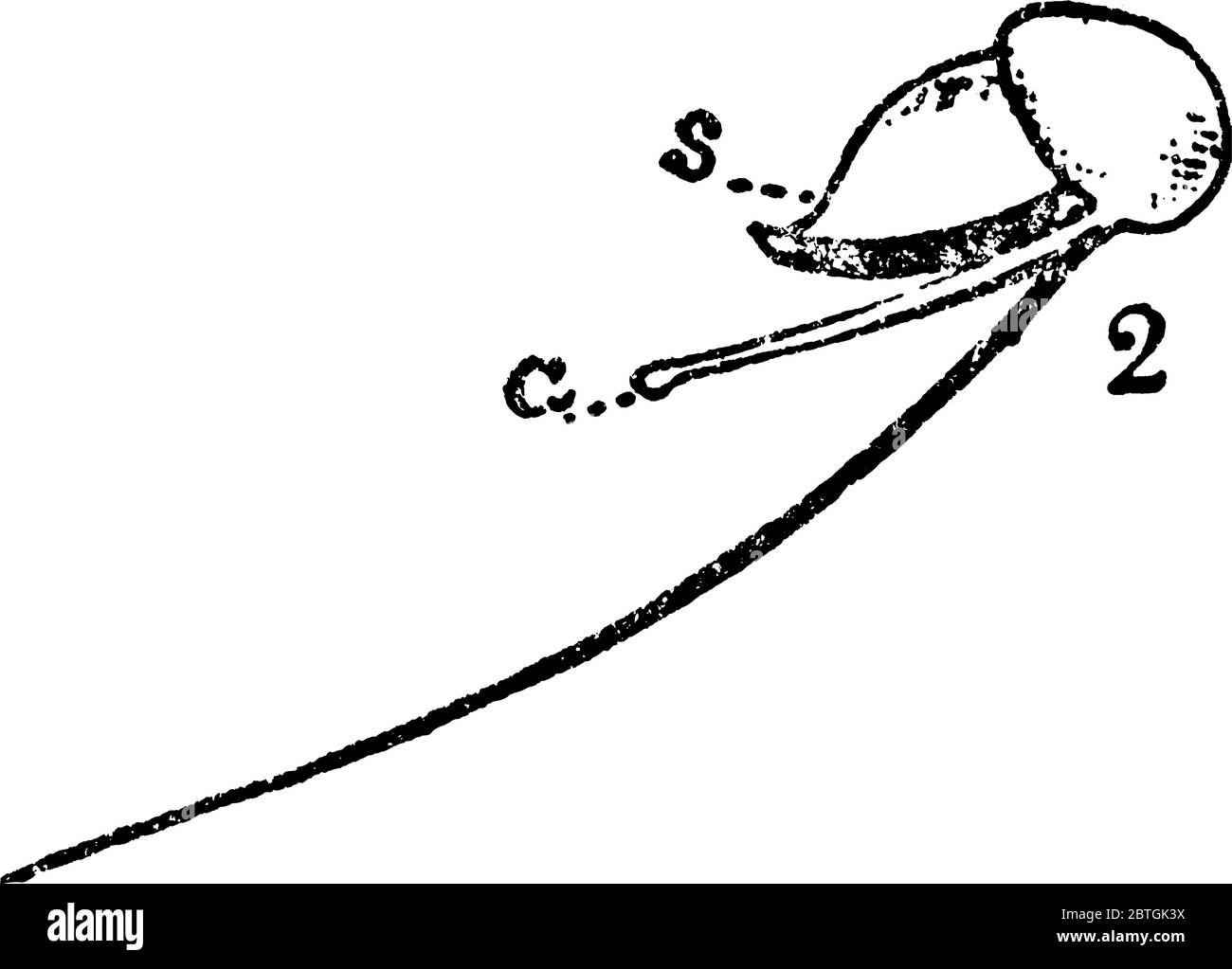 A free-living non-parasitic marine-dwelling species of dinoflagellate that exhibits bioluminescence, vintage line drawing or engraving illustration. Stock Vectorhttps://www.alamy.com/image-license-details/?v=1https://www.alamy.com/a-free-living-non-parasitic-marine-dwelling-species-of-dinoflagellate-that-exhibits-bioluminescence-vintage-line-drawing-or-engraving-illustration-image359325342.html
A free-living non-parasitic marine-dwelling species of dinoflagellate that exhibits bioluminescence, vintage line drawing or engraving illustration. Stock Vectorhttps://www.alamy.com/image-license-details/?v=1https://www.alamy.com/a-free-living-non-parasitic-marine-dwelling-species-of-dinoflagellate-that-exhibits-bioluminescence-vintage-line-drawing-or-engraving-illustration-image359325342.htmlRF2BTGK3X–A free-living non-parasitic marine-dwelling species of dinoflagellate that exhibits bioluminescence, vintage line drawing or engraving illustration.
 May 21, 2018 - Dongying, Dongying, China - Dongying, CHINA-21st May 2018: Noctiluca scintillans can be seen along the coast in Dongying, east China's Shandong Province, May 21st, 2018. Noctiluca scintillans, commonly known as the sea sparkle and also published as Noctiluca miliaris, is a free-living, nonparasitic, marine-dwelling species of dinoflagellate that exhibits bioluminescence when disturbed (popularly known as mareel). Its bioluminescence is produced throughout the cytoplasm of this single-celled protist, by a luciferin-luciferase reaction in thousands of spherically shaped organelles Stock Photohttps://www.alamy.com/image-license-details/?v=1https://www.alamy.com/may-21-2018-dongying-dongying-china-dongying-china-21st-may-2018-noctiluca-scintillans-can-be-seen-along-the-coast-in-dongying-east-chinas-shandong-province-may-21st-2018-noctiluca-scintillans-commonly-known-as-the-sea-sparkle-and-also-published-as-noctiluca-miliaris-is-a-free-living-nonparasitic-marine-dwelling-species-of-dinoflagellate-that-exhibits-bioluminescence-when-disturbed-popularly-known-as-mareel-its-bioluminescence-is-produced-throughout-the-cytoplasm-of-this-single-celled-protist-by-a-luciferin-luciferase-reaction-in-thousands-of-spherically-shaped-organelles-image185676124.html
May 21, 2018 - Dongying, Dongying, China - Dongying, CHINA-21st May 2018: Noctiluca scintillans can be seen along the coast in Dongying, east China's Shandong Province, May 21st, 2018. Noctiluca scintillans, commonly known as the sea sparkle and also published as Noctiluca miliaris, is a free-living, nonparasitic, marine-dwelling species of dinoflagellate that exhibits bioluminescence when disturbed (popularly known as mareel). Its bioluminescence is produced throughout the cytoplasm of this single-celled protist, by a luciferin-luciferase reaction in thousands of spherically shaped organelles Stock Photohttps://www.alamy.com/image-license-details/?v=1https://www.alamy.com/may-21-2018-dongying-dongying-china-dongying-china-21st-may-2018-noctiluca-scintillans-can-be-seen-along-the-coast-in-dongying-east-chinas-shandong-province-may-21st-2018-noctiluca-scintillans-commonly-known-as-the-sea-sparkle-and-also-published-as-noctiluca-miliaris-is-a-free-living-nonparasitic-marine-dwelling-species-of-dinoflagellate-that-exhibits-bioluminescence-when-disturbed-popularly-known-as-mareel-its-bioluminescence-is-produced-throughout-the-cytoplasm-of-this-single-celled-protist-by-a-luciferin-luciferase-reaction-in-thousands-of-spherically-shaped-organelles-image185676124.htmlRMMP27P4–May 21, 2018 - Dongying, Dongying, China - Dongying, CHINA-21st May 2018: Noctiluca scintillans can be seen along the coast in Dongying, east China's Shandong Province, May 21st, 2018. Noctiluca scintillans, commonly known as the sea sparkle and also published as Noctiluca miliaris, is a free-living, nonparasitic, marine-dwelling species of dinoflagellate that exhibits bioluminescence when disturbed (popularly known as mareel). Its bioluminescence is produced throughout the cytoplasm of this single-celled protist, by a luciferin-luciferase reaction in thousands of spherically shaped organelles
 Noctiluca miliaris, Print, Noctiluca scintillans, commonly known as the sea sparkle, and also published as Noctiluca miliaris, is a free-living, marine-dwelling species of dinoflagellate that exhibits bioluminescence when disturbed (popularly known as mareel). Its bioluminescence is produced throughout the cytoplasm of this single-celled protist, by a luciferin-luciferase reaction in thousands of spherically shaped organelles, called scintillons., Reimagined by Gibon, design of warm cheerful glowing of brightness and light rays radiance. Classic art reinvented with a modern twist. Photography Stock Photohttps://www.alamy.com/image-license-details/?v=1https://www.alamy.com/noctiluca-miliaris-print-noctiluca-scintillans-commonly-known-as-the-sea-sparkle-and-also-published-as-noctiluca-miliaris-is-a-free-living-marine-dwelling-species-of-dinoflagellate-that-exhibits-bioluminescence-when-disturbed-popularly-known-as-mareel-its-bioluminescence-is-produced-throughout-the-cytoplasm-of-this-single-celled-protist-by-a-luciferin-luciferase-reaction-in-thousands-of-spherically-shaped-organelles-called-scintillons-reimagined-by-gibon-design-of-warm-cheerful-glowing-of-brightness-and-light-rays-radiance-classic-art-reinvented-with-a-modern-twist-photography-image349770740.html
Noctiluca miliaris, Print, Noctiluca scintillans, commonly known as the sea sparkle, and also published as Noctiluca miliaris, is a free-living, marine-dwelling species of dinoflagellate that exhibits bioluminescence when disturbed (popularly known as mareel). Its bioluminescence is produced throughout the cytoplasm of this single-celled protist, by a luciferin-luciferase reaction in thousands of spherically shaped organelles, called scintillons., Reimagined by Gibon, design of warm cheerful glowing of brightness and light rays radiance. Classic art reinvented with a modern twist. Photography Stock Photohttps://www.alamy.com/image-license-details/?v=1https://www.alamy.com/noctiluca-miliaris-print-noctiluca-scintillans-commonly-known-as-the-sea-sparkle-and-also-published-as-noctiluca-miliaris-is-a-free-living-marine-dwelling-species-of-dinoflagellate-that-exhibits-bioluminescence-when-disturbed-popularly-known-as-mareel-its-bioluminescence-is-produced-throughout-the-cytoplasm-of-this-single-celled-protist-by-a-luciferin-luciferase-reaction-in-thousands-of-spherically-shaped-organelles-called-scintillons-reimagined-by-gibon-design-of-warm-cheerful-glowing-of-brightness-and-light-rays-radiance-classic-art-reinvented-with-a-modern-twist-photography-image349770740.htmlRF2B91C44–Noctiluca miliaris, Print, Noctiluca scintillans, commonly known as the sea sparkle, and also published as Noctiluca miliaris, is a free-living, marine-dwelling species of dinoflagellate that exhibits bioluminescence when disturbed (popularly known as mareel). Its bioluminescence is produced throughout the cytoplasm of this single-celled protist, by a luciferin-luciferase reaction in thousands of spherically shaped organelles, called scintillons., Reimagined by Gibon, design of warm cheerful glowing of brightness and light rays radiance. Classic art reinvented with a modern twist. Photography
 WASHINGTON DC, United States — The Sant Ocean Hall at the Smithsonian National Museum of Natural History on the National Mall. This expansive 23,000-square-foot exhibition showcases the museum's vast marine collections, featuring a 45-foot-long replica of a North Atlantic Right Whale, a giant squid model, and interactive displays that explore ocean ecosystems from the surface to the deep sea. Stock Photohttps://www.alamy.com/image-license-details/?v=1https://www.alamy.com/washington-dc-united-states-the-sant-ocean-hall-at-the-smithsonian-national-museum-of-natural-history-on-the-national-mall-this-expansive-23000-square-foot-exhibition-showcases-the-museums-vast-marine-collections-featuring-a-45-foot-long-replica-of-a-north-atlantic-right-whale-a-giant-squid-model-and-interactive-displays-that-explore-ocean-ecosystems-from-the-surface-to-the-deep-sea-image622405745.html
WASHINGTON DC, United States — The Sant Ocean Hall at the Smithsonian National Museum of Natural History on the National Mall. This expansive 23,000-square-foot exhibition showcases the museum's vast marine collections, featuring a 45-foot-long replica of a North Atlantic Right Whale, a giant squid model, and interactive displays that explore ocean ecosystems from the surface to the deep sea. Stock Photohttps://www.alamy.com/image-license-details/?v=1https://www.alamy.com/washington-dc-united-states-the-sant-ocean-hall-at-the-smithsonian-national-museum-of-natural-history-on-the-national-mall-this-expansive-23000-square-foot-exhibition-showcases-the-museums-vast-marine-collections-featuring-a-45-foot-long-replica-of-a-north-atlantic-right-whale-a-giant-squid-model-and-interactive-displays-that-explore-ocean-ecosystems-from-the-surface-to-the-deep-sea-image622405745.htmlRM2Y4H0TH–WASHINGTON DC, United States — The Sant Ocean Hall at the Smithsonian National Museum of Natural History on the National Mall. This expansive 23,000-square-foot exhibition showcases the museum's vast marine collections, featuring a 45-foot-long replica of a North Atlantic Right Whale, a giant squid model, and interactive displays that explore ocean ecosystems from the surface to the deep sea.
 BALTIMORE, Maryland — Jellyfish float gracefully in a specialized tank at the National Aquarium's jellies exhibit in the Inner Harbor. The translucent Stock Photohttps://www.alamy.com/image-license-details/?v=1https://www.alamy.com/baltimore-maryland-jellyfish-float-gracefully-in-a-specialized-tank-at-the-national-aquariums-jellies-exhibit-in-the-inner-harbor-the-translucent-image622411775.html
BALTIMORE, Maryland — Jellyfish float gracefully in a specialized tank at the National Aquarium's jellies exhibit in the Inner Harbor. The translucent Stock Photohttps://www.alamy.com/image-license-details/?v=1https://www.alamy.com/baltimore-maryland-jellyfish-float-gracefully-in-a-specialized-tank-at-the-national-aquariums-jellies-exhibit-in-the-inner-harbor-the-translucent-image622411775.htmlRM2Y4H8FY–BALTIMORE, Maryland — Jellyfish float gracefully in a specialized tank at the National Aquarium's jellies exhibit in the Inner Harbor. The translucent
 Noctiluca miliaris, Print, Noctiluca scintillans, commonly known as the sea sparkle, and also published as Noctiluca miliaris, is a free-living, marine-dwelling species of dinoflagellate that exhibits bioluminescence when disturbed (popularly known as mareel). Its bioluminescence is produced throughout the cytoplasm of this single-celled protist, by a luciferin-luciferase reaction in thousands of spherically shaped organelles, called scintillons Stock Photohttps://www.alamy.com/image-license-details/?v=1https://www.alamy.com/noctiluca-miliaris-print-noctiluca-scintillans-commonly-known-as-the-sea-sparkle-and-also-published-as-noctiluca-miliaris-is-a-free-living-marine-dwelling-species-of-dinoflagellate-that-exhibits-bioluminescence-when-disturbed-popularly-known-as-mareel-its-bioluminescence-is-produced-throughout-the-cytoplasm-of-this-single-celled-protist-by-a-luciferin-luciferase-reaction-in-thousands-of-spherically-shaped-organelles-called-scintillons-image328693420.html
Noctiluca miliaris, Print, Noctiluca scintillans, commonly known as the sea sparkle, and also published as Noctiluca miliaris, is a free-living, marine-dwelling species of dinoflagellate that exhibits bioluminescence when disturbed (popularly known as mareel). Its bioluminescence is produced throughout the cytoplasm of this single-celled protist, by a luciferin-luciferase reaction in thousands of spherically shaped organelles, called scintillons Stock Photohttps://www.alamy.com/image-license-details/?v=1https://www.alamy.com/noctiluca-miliaris-print-noctiluca-scintillans-commonly-known-as-the-sea-sparkle-and-also-published-as-noctiluca-miliaris-is-a-free-living-marine-dwelling-species-of-dinoflagellate-that-exhibits-bioluminescence-when-disturbed-popularly-known-as-mareel-its-bioluminescence-is-produced-throughout-the-cytoplasm-of-this-single-celled-protist-by-a-luciferin-luciferase-reaction-in-thousands-of-spherically-shaped-organelles-called-scintillons-image328693420.htmlRM2A2N7PM–Noctiluca miliaris, Print, Noctiluca scintillans, commonly known as the sea sparkle, and also published as Noctiluca miliaris, is a free-living, marine-dwelling species of dinoflagellate that exhibits bioluminescence when disturbed (popularly known as mareel). Its bioluminescence is produced throughout the cytoplasm of this single-celled protist, by a luciferin-luciferase reaction in thousands of spherically shaped organelles, called scintillons
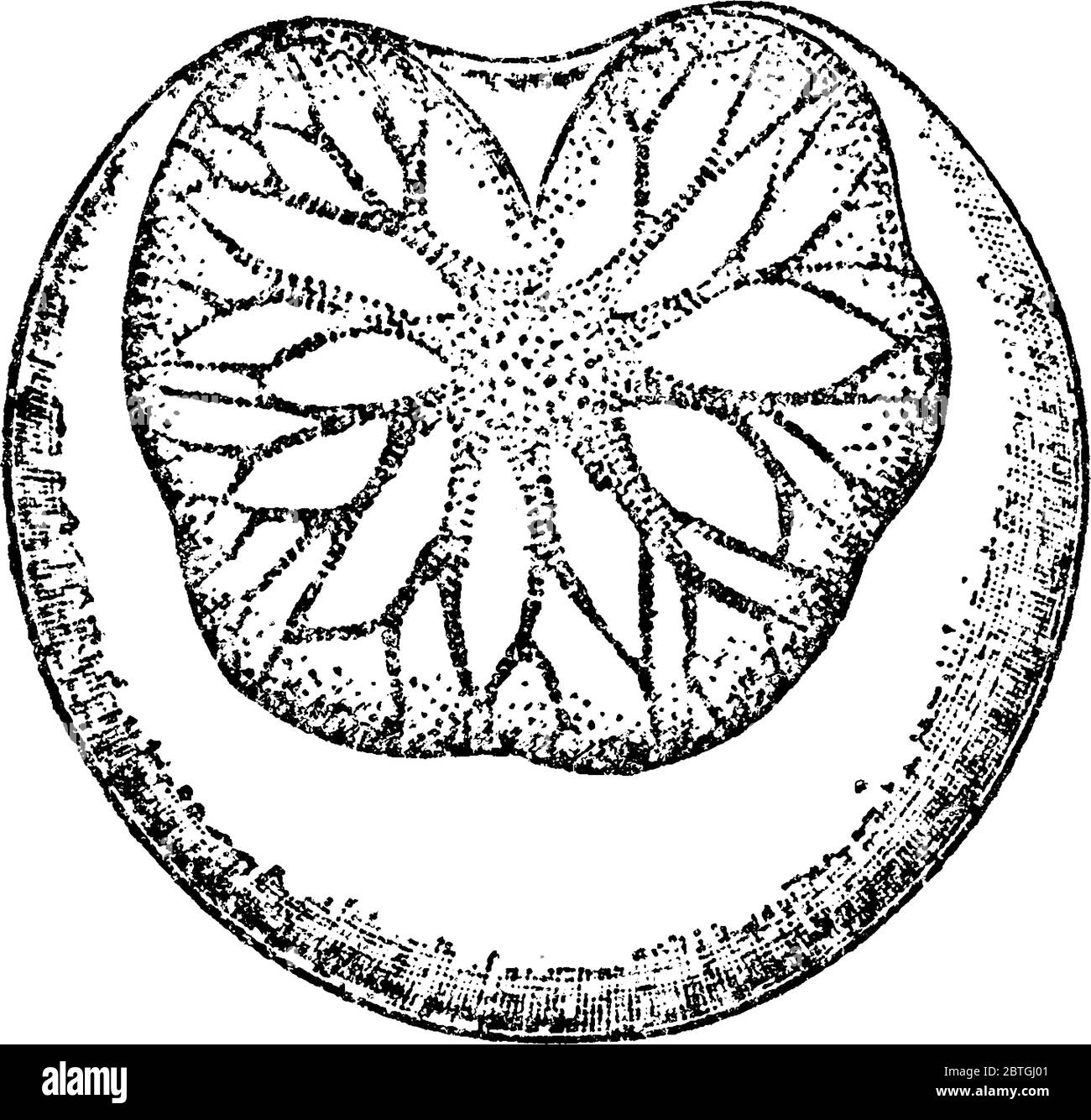 A free-living non-parasitic marine-dwelling species of dinoflagellate that exhibits bioluminescence, vintage line drawing or engraving illustration. Stock Vectorhttps://www.alamy.com/image-license-details/?v=1https://www.alamy.com/a-free-living-non-parasitic-marine-dwelling-species-of-dinoflagellate-that-exhibits-bioluminescence-vintage-line-drawing-or-engraving-illustration-image359324449.html
A free-living non-parasitic marine-dwelling species of dinoflagellate that exhibits bioluminescence, vintage line drawing or engraving illustration. Stock Vectorhttps://www.alamy.com/image-license-details/?v=1https://www.alamy.com/a-free-living-non-parasitic-marine-dwelling-species-of-dinoflagellate-that-exhibits-bioluminescence-vintage-line-drawing-or-engraving-illustration-image359324449.htmlRF2BTGJ01–A free-living non-parasitic marine-dwelling species of dinoflagellate that exhibits bioluminescence, vintage line drawing or engraving illustration.
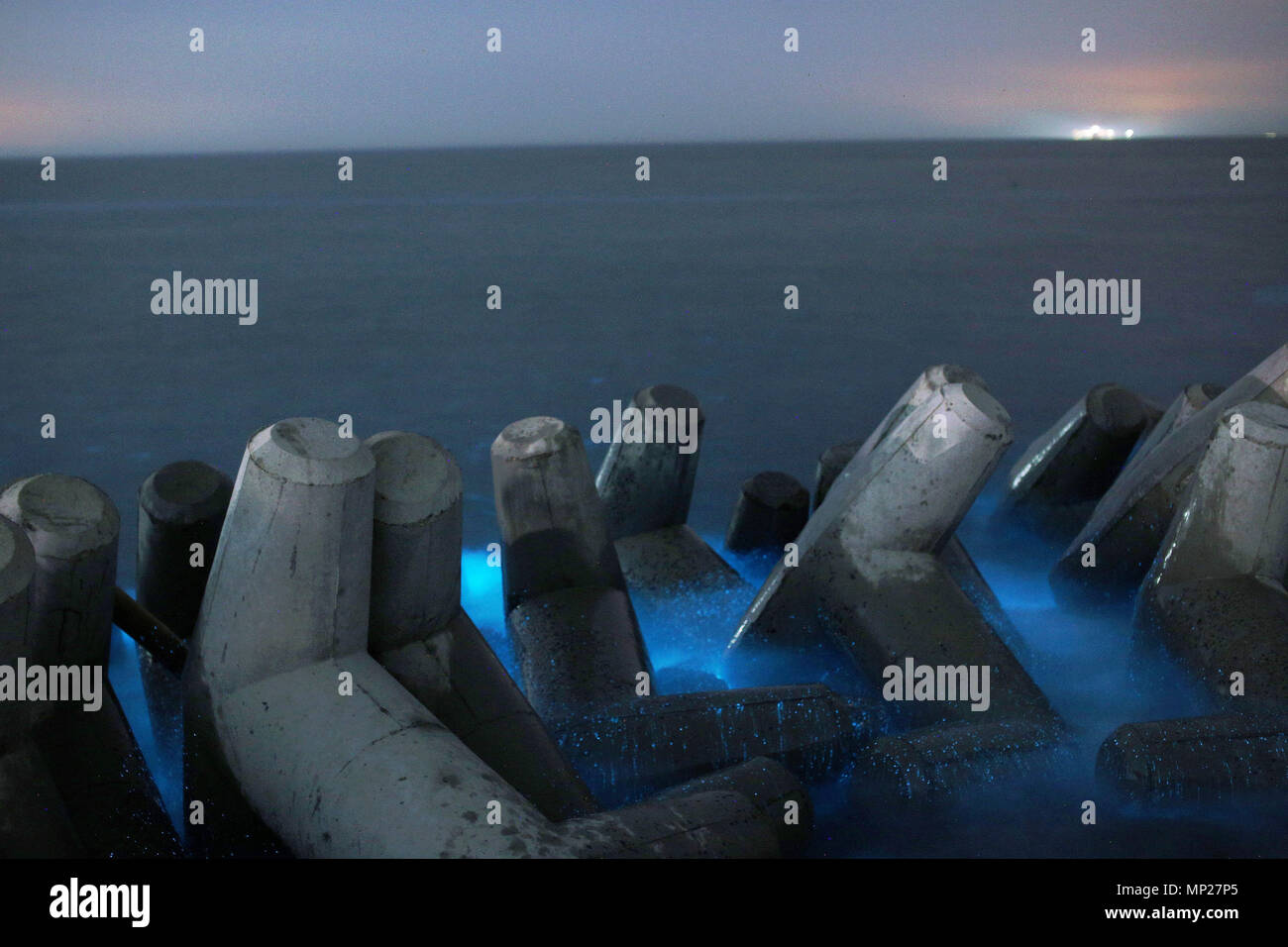 May 21, 2018 - Dongying, Dongying, China - Dongying, CHINA-21st May 2018: Noctiluca scintillans can be seen along the coast in Dongying, east China's Shandong Province, May 21st, 2018. Noctiluca scintillans, commonly known as the sea sparkle and also published as Noctiluca miliaris, is a free-living, nonparasitic, marine-dwelling species of dinoflagellate that exhibits bioluminescence when disturbed (popularly known as mareel). Its bioluminescence is produced throughout the cytoplasm of this single-celled protist, by a luciferin-luciferase reaction in thousands of spherically shaped organelles Stock Photohttps://www.alamy.com/image-license-details/?v=1https://www.alamy.com/may-21-2018-dongying-dongying-china-dongying-china-21st-may-2018-noctiluca-scintillans-can-be-seen-along-the-coast-in-dongying-east-chinas-shandong-province-may-21st-2018-noctiluca-scintillans-commonly-known-as-the-sea-sparkle-and-also-published-as-noctiluca-miliaris-is-a-free-living-nonparasitic-marine-dwelling-species-of-dinoflagellate-that-exhibits-bioluminescence-when-disturbed-popularly-known-as-mareel-its-bioluminescence-is-produced-throughout-the-cytoplasm-of-this-single-celled-protist-by-a-luciferin-luciferase-reaction-in-thousands-of-spherically-shaped-organelles-image185676125.html
May 21, 2018 - Dongying, Dongying, China - Dongying, CHINA-21st May 2018: Noctiluca scintillans can be seen along the coast in Dongying, east China's Shandong Province, May 21st, 2018. Noctiluca scintillans, commonly known as the sea sparkle and also published as Noctiluca miliaris, is a free-living, nonparasitic, marine-dwelling species of dinoflagellate that exhibits bioluminescence when disturbed (popularly known as mareel). Its bioluminescence is produced throughout the cytoplasm of this single-celled protist, by a luciferin-luciferase reaction in thousands of spherically shaped organelles Stock Photohttps://www.alamy.com/image-license-details/?v=1https://www.alamy.com/may-21-2018-dongying-dongying-china-dongying-china-21st-may-2018-noctiluca-scintillans-can-be-seen-along-the-coast-in-dongying-east-chinas-shandong-province-may-21st-2018-noctiluca-scintillans-commonly-known-as-the-sea-sparkle-and-also-published-as-noctiluca-miliaris-is-a-free-living-nonparasitic-marine-dwelling-species-of-dinoflagellate-that-exhibits-bioluminescence-when-disturbed-popularly-known-as-mareel-its-bioluminescence-is-produced-throughout-the-cytoplasm-of-this-single-celled-protist-by-a-luciferin-luciferase-reaction-in-thousands-of-spherically-shaped-organelles-image185676125.htmlRMMP27P5–May 21, 2018 - Dongying, Dongying, China - Dongying, CHINA-21st May 2018: Noctiluca scintillans can be seen along the coast in Dongying, east China's Shandong Province, May 21st, 2018. Noctiluca scintillans, commonly known as the sea sparkle and also published as Noctiluca miliaris, is a free-living, nonparasitic, marine-dwelling species of dinoflagellate that exhibits bioluminescence when disturbed (popularly known as mareel). Its bioluminescence is produced throughout the cytoplasm of this single-celled protist, by a luciferin-luciferase reaction in thousands of spherically shaped organelles
 A free-living non-parasitic marine-dwelling species of dinoflagellate that exhibits bioluminescence, vintage line drawing or engraving illustration. Stock Vectorhttps://www.alamy.com/image-license-details/?v=1https://www.alamy.com/a-free-living-non-parasitic-marine-dwelling-species-of-dinoflagellate-that-exhibits-bioluminescence-vintage-line-drawing-or-engraving-illustration-image359323050.html
A free-living non-parasitic marine-dwelling species of dinoflagellate that exhibits bioluminescence, vintage line drawing or engraving illustration. Stock Vectorhttps://www.alamy.com/image-license-details/?v=1https://www.alamy.com/a-free-living-non-parasitic-marine-dwelling-species-of-dinoflagellate-that-exhibits-bioluminescence-vintage-line-drawing-or-engraving-illustration-image359323050.htmlRF2BTGG62–A free-living non-parasitic marine-dwelling species of dinoflagellate that exhibits bioluminescence, vintage line drawing or engraving illustration.
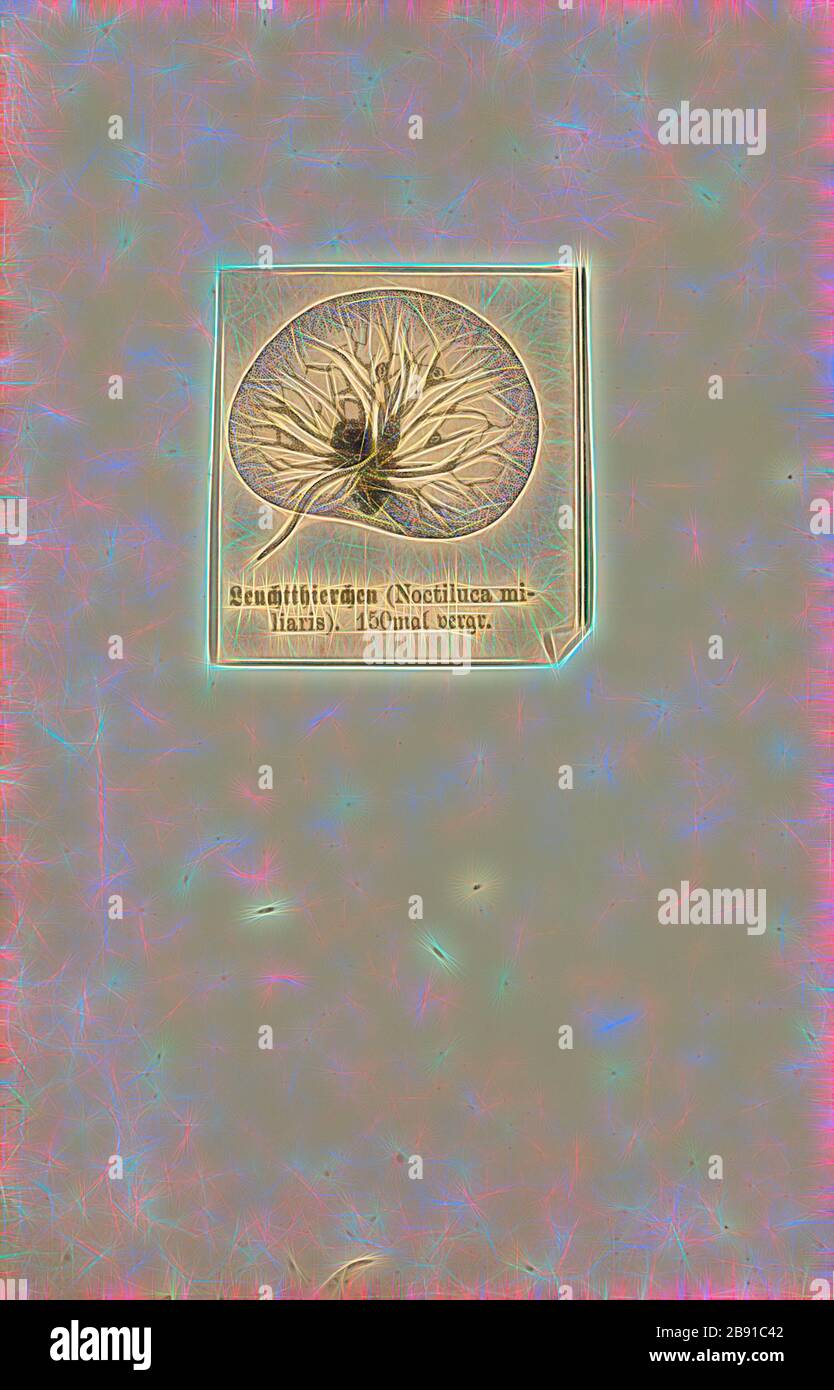 Noctiluca miliaris, Print, Noctiluca scintillans, commonly known as the sea sparkle, and also published as Noctiluca miliaris, is a free-living, marine-dwelling species of dinoflagellate that exhibits bioluminescence when disturbed (popularly known as mareel). Its bioluminescence is produced throughout the cytoplasm of this single-celled protist, by a luciferin-luciferase reaction in thousands of spherically shaped organelles, called scintillons., Reimagined by Gibon, design of warm cheerful glowing of brightness and light rays radiance. Classic art reinvented with a modern twist. Photography Stock Photohttps://www.alamy.com/image-license-details/?v=1https://www.alamy.com/noctiluca-miliaris-print-noctiluca-scintillans-commonly-known-as-the-sea-sparkle-and-also-published-as-noctiluca-miliaris-is-a-free-living-marine-dwelling-species-of-dinoflagellate-that-exhibits-bioluminescence-when-disturbed-popularly-known-as-mareel-its-bioluminescence-is-produced-throughout-the-cytoplasm-of-this-single-celled-protist-by-a-luciferin-luciferase-reaction-in-thousands-of-spherically-shaped-organelles-called-scintillons-reimagined-by-gibon-design-of-warm-cheerful-glowing-of-brightness-and-light-rays-radiance-classic-art-reinvented-with-a-modern-twist-photography-image349770738.html
Noctiluca miliaris, Print, Noctiluca scintillans, commonly known as the sea sparkle, and also published as Noctiluca miliaris, is a free-living, marine-dwelling species of dinoflagellate that exhibits bioluminescence when disturbed (popularly known as mareel). Its bioluminescence is produced throughout the cytoplasm of this single-celled protist, by a luciferin-luciferase reaction in thousands of spherically shaped organelles, called scintillons., Reimagined by Gibon, design of warm cheerful glowing of brightness and light rays radiance. Classic art reinvented with a modern twist. Photography Stock Photohttps://www.alamy.com/image-license-details/?v=1https://www.alamy.com/noctiluca-miliaris-print-noctiluca-scintillans-commonly-known-as-the-sea-sparkle-and-also-published-as-noctiluca-miliaris-is-a-free-living-marine-dwelling-species-of-dinoflagellate-that-exhibits-bioluminescence-when-disturbed-popularly-known-as-mareel-its-bioluminescence-is-produced-throughout-the-cytoplasm-of-this-single-celled-protist-by-a-luciferin-luciferase-reaction-in-thousands-of-spherically-shaped-organelles-called-scintillons-reimagined-by-gibon-design-of-warm-cheerful-glowing-of-brightness-and-light-rays-radiance-classic-art-reinvented-with-a-modern-twist-photography-image349770738.htmlRF2B91C42–Noctiluca miliaris, Print, Noctiluca scintillans, commonly known as the sea sparkle, and also published as Noctiluca miliaris, is a free-living, marine-dwelling species of dinoflagellate that exhibits bioluminescence when disturbed (popularly known as mareel). Its bioluminescence is produced throughout the cytoplasm of this single-celled protist, by a luciferin-luciferase reaction in thousands of spherically shaped organelles, called scintillons., Reimagined by Gibon, design of warm cheerful glowing of brightness and light rays radiance. Classic art reinvented with a modern twist. Photography
 BALTIMORE, Maryland — Jellyfish float gracefully in a specialized tank at the National Aquarium's jellies exhibit in the Inner Harbor. The translucent Stock Photohttps://www.alamy.com/image-license-details/?v=1https://www.alamy.com/baltimore-maryland-jellyfish-float-gracefully-in-a-specialized-tank-at-the-national-aquariums-jellies-exhibit-in-the-inner-harbor-the-translucent-image622411887.html
BALTIMORE, Maryland — Jellyfish float gracefully in a specialized tank at the National Aquarium's jellies exhibit in the Inner Harbor. The translucent Stock Photohttps://www.alamy.com/image-license-details/?v=1https://www.alamy.com/baltimore-maryland-jellyfish-float-gracefully-in-a-specialized-tank-at-the-national-aquariums-jellies-exhibit-in-the-inner-harbor-the-translucent-image622411887.htmlRM2Y4H8KY–BALTIMORE, Maryland — Jellyfish float gracefully in a specialized tank at the National Aquarium's jellies exhibit in the Inner Harbor. The translucent
 May 21, 2018 - Dongying, Dongying, China - Dongying, CHINA-21st May 2018: Noctiluca scintillans can be seen along the coast in Dongying, east China's Shandong Province, May 21st, 2018. Noctiluca scintillans, commonly known as the sea sparkle and also published as Noctiluca miliaris, is a free-living, nonparasitic, marine-dwelling species of dinoflagellate that exhibits bioluminescence when disturbed (popularly known as mareel). Its bioluminescence is produced throughout the cytoplasm of this single-celled protist, by a luciferin-luciferase reaction in thousands of spherically shaped organelles Stock Photohttps://www.alamy.com/image-license-details/?v=1https://www.alamy.com/may-21-2018-dongying-dongying-china-dongying-china-21st-may-2018-noctiluca-scintillans-can-be-seen-along-the-coast-in-dongying-east-chinas-shandong-province-may-21st-2018-noctiluca-scintillans-commonly-known-as-the-sea-sparkle-and-also-published-as-noctiluca-miliaris-is-a-free-living-nonparasitic-marine-dwelling-species-of-dinoflagellate-that-exhibits-bioluminescence-when-disturbed-popularly-known-as-mareel-its-bioluminescence-is-produced-throughout-the-cytoplasm-of-this-single-celled-protist-by-a-luciferin-luciferase-reaction-in-thousands-of-spherically-shaped-organelles-image185676100.html
May 21, 2018 - Dongying, Dongying, China - Dongying, CHINA-21st May 2018: Noctiluca scintillans can be seen along the coast in Dongying, east China's Shandong Province, May 21st, 2018. Noctiluca scintillans, commonly known as the sea sparkle and also published as Noctiluca miliaris, is a free-living, nonparasitic, marine-dwelling species of dinoflagellate that exhibits bioluminescence when disturbed (popularly known as mareel). Its bioluminescence is produced throughout the cytoplasm of this single-celled protist, by a luciferin-luciferase reaction in thousands of spherically shaped organelles Stock Photohttps://www.alamy.com/image-license-details/?v=1https://www.alamy.com/may-21-2018-dongying-dongying-china-dongying-china-21st-may-2018-noctiluca-scintillans-can-be-seen-along-the-coast-in-dongying-east-chinas-shandong-province-may-21st-2018-noctiluca-scintillans-commonly-known-as-the-sea-sparkle-and-also-published-as-noctiluca-miliaris-is-a-free-living-nonparasitic-marine-dwelling-species-of-dinoflagellate-that-exhibits-bioluminescence-when-disturbed-popularly-known-as-mareel-its-bioluminescence-is-produced-throughout-the-cytoplasm-of-this-single-celled-protist-by-a-luciferin-luciferase-reaction-in-thousands-of-spherically-shaped-organelles-image185676100.htmlRMMP27N8–May 21, 2018 - Dongying, Dongying, China - Dongying, CHINA-21st May 2018: Noctiluca scintillans can be seen along the coast in Dongying, east China's Shandong Province, May 21st, 2018. Noctiluca scintillans, commonly known as the sea sparkle and also published as Noctiluca miliaris, is a free-living, nonparasitic, marine-dwelling species of dinoflagellate that exhibits bioluminescence when disturbed (popularly known as mareel). Its bioluminescence is produced throughout the cytoplasm of this single-celled protist, by a luciferin-luciferase reaction in thousands of spherically shaped organelles
 May 21, 2018 - Dongying, Dongying, China - Dongying, CHINA-21st May 2018: Noctiluca scintillans can be seen along the coast in Dongying, east China's Shandong Province, May 21st, 2018. Noctiluca scintillans, commonly known as the sea sparkle and also published as Noctiluca miliaris, is a free-living, nonparasitic, marine-dwelling species of dinoflagellate that exhibits bioluminescence when disturbed (popularly known as mareel). Its bioluminescence is produced throughout the cytoplasm of this single-celled protist, by a luciferin-luciferase reaction in thousands of spherically shaped organelles Stock Photohttps://www.alamy.com/image-license-details/?v=1https://www.alamy.com/may-21-2018-dongying-dongying-china-dongying-china-21st-may-2018-noctiluca-scintillans-can-be-seen-along-the-coast-in-dongying-east-chinas-shandong-province-may-21st-2018-noctiluca-scintillans-commonly-known-as-the-sea-sparkle-and-also-published-as-noctiluca-miliaris-is-a-free-living-nonparasitic-marine-dwelling-species-of-dinoflagellate-that-exhibits-bioluminescence-when-disturbed-popularly-known-as-mareel-its-bioluminescence-is-produced-throughout-the-cytoplasm-of-this-single-celled-protist-by-a-luciferin-luciferase-reaction-in-thousands-of-spherically-shaped-organelles-image185676105.html
May 21, 2018 - Dongying, Dongying, China - Dongying, CHINA-21st May 2018: Noctiluca scintillans can be seen along the coast in Dongying, east China's Shandong Province, May 21st, 2018. Noctiluca scintillans, commonly known as the sea sparkle and also published as Noctiluca miliaris, is a free-living, nonparasitic, marine-dwelling species of dinoflagellate that exhibits bioluminescence when disturbed (popularly known as mareel). Its bioluminescence is produced throughout the cytoplasm of this single-celled protist, by a luciferin-luciferase reaction in thousands of spherically shaped organelles Stock Photohttps://www.alamy.com/image-license-details/?v=1https://www.alamy.com/may-21-2018-dongying-dongying-china-dongying-china-21st-may-2018-noctiluca-scintillans-can-be-seen-along-the-coast-in-dongying-east-chinas-shandong-province-may-21st-2018-noctiluca-scintillans-commonly-known-as-the-sea-sparkle-and-also-published-as-noctiluca-miliaris-is-a-free-living-nonparasitic-marine-dwelling-species-of-dinoflagellate-that-exhibits-bioluminescence-when-disturbed-popularly-known-as-mareel-its-bioluminescence-is-produced-throughout-the-cytoplasm-of-this-single-celled-protist-by-a-luciferin-luciferase-reaction-in-thousands-of-spherically-shaped-organelles-image185676105.htmlRMMP27ND–May 21, 2018 - Dongying, Dongying, China - Dongying, CHINA-21st May 2018: Noctiluca scintillans can be seen along the coast in Dongying, east China's Shandong Province, May 21st, 2018. Noctiluca scintillans, commonly known as the sea sparkle and also published as Noctiluca miliaris, is a free-living, nonparasitic, marine-dwelling species of dinoflagellate that exhibits bioluminescence when disturbed (popularly known as mareel). Its bioluminescence is produced throughout the cytoplasm of this single-celled protist, by a luciferin-luciferase reaction in thousands of spherically shaped organelles
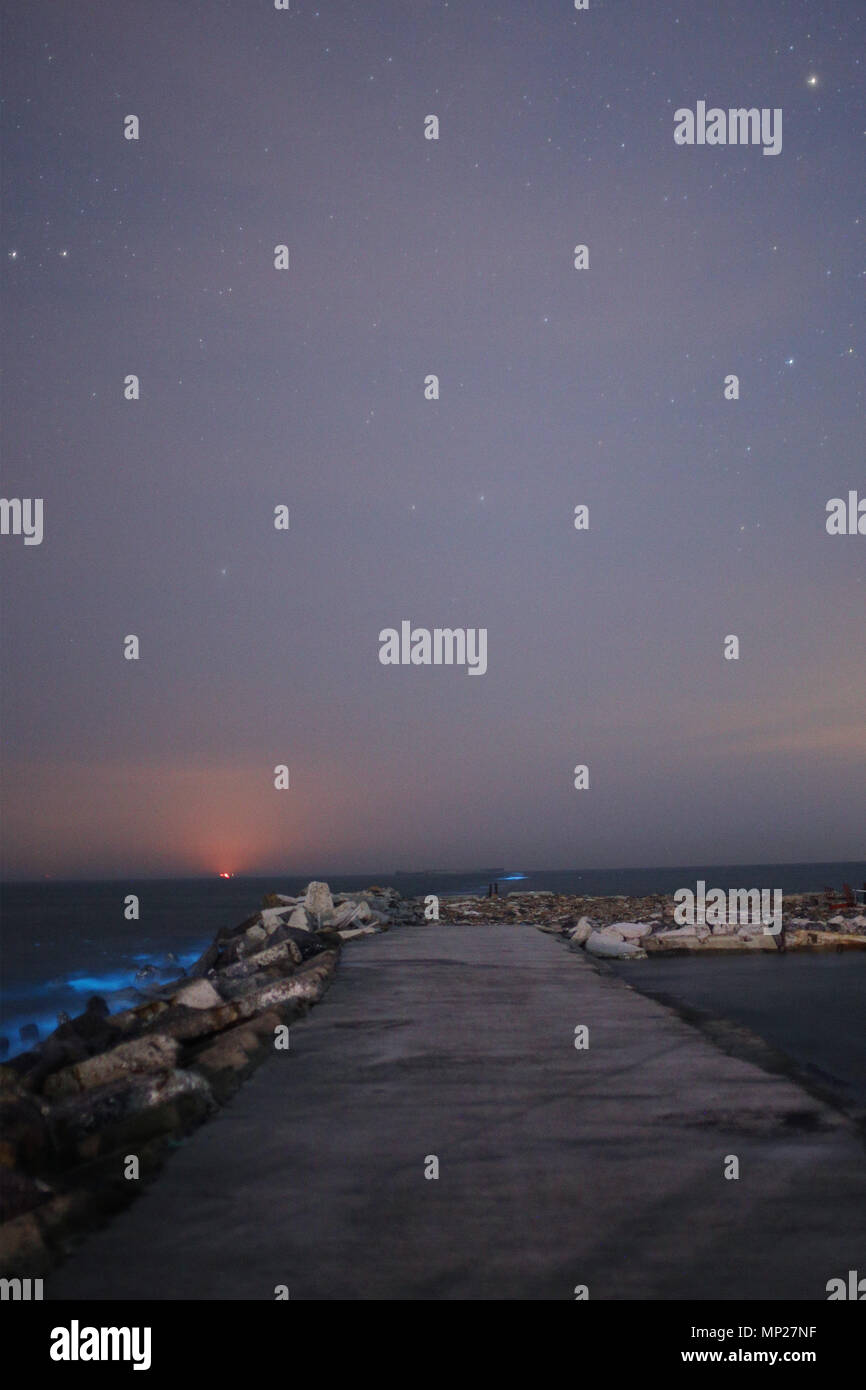 May 21, 2018 - Dongying, Dongying, China - Dongying, CHINA-21st May 2018: Noctiluca scintillans can be seen along the coast in Dongying, east China's Shandong Province, May 21st, 2018. Noctiluca scintillans, commonly known as the sea sparkle and also published as Noctiluca miliaris, is a free-living, nonparasitic, marine-dwelling species of dinoflagellate that exhibits bioluminescence when disturbed (popularly known as mareel). Its bioluminescence is produced throughout the cytoplasm of this single-celled protist, by a luciferin-luciferase reaction in thousands of spherically shaped organelles Stock Photohttps://www.alamy.com/image-license-details/?v=1https://www.alamy.com/may-21-2018-dongying-dongying-china-dongying-china-21st-may-2018-noctiluca-scintillans-can-be-seen-along-the-coast-in-dongying-east-chinas-shandong-province-may-21st-2018-noctiluca-scintillans-commonly-known-as-the-sea-sparkle-and-also-published-as-noctiluca-miliaris-is-a-free-living-nonparasitic-marine-dwelling-species-of-dinoflagellate-that-exhibits-bioluminescence-when-disturbed-popularly-known-as-mareel-its-bioluminescence-is-produced-throughout-the-cytoplasm-of-this-single-celled-protist-by-a-luciferin-luciferase-reaction-in-thousands-of-spherically-shaped-organelles-image185676107.html
May 21, 2018 - Dongying, Dongying, China - Dongying, CHINA-21st May 2018: Noctiluca scintillans can be seen along the coast in Dongying, east China's Shandong Province, May 21st, 2018. Noctiluca scintillans, commonly known as the sea sparkle and also published as Noctiluca miliaris, is a free-living, nonparasitic, marine-dwelling species of dinoflagellate that exhibits bioluminescence when disturbed (popularly known as mareel). Its bioluminescence is produced throughout the cytoplasm of this single-celled protist, by a luciferin-luciferase reaction in thousands of spherically shaped organelles Stock Photohttps://www.alamy.com/image-license-details/?v=1https://www.alamy.com/may-21-2018-dongying-dongying-china-dongying-china-21st-may-2018-noctiluca-scintillans-can-be-seen-along-the-coast-in-dongying-east-chinas-shandong-province-may-21st-2018-noctiluca-scintillans-commonly-known-as-the-sea-sparkle-and-also-published-as-noctiluca-miliaris-is-a-free-living-nonparasitic-marine-dwelling-species-of-dinoflagellate-that-exhibits-bioluminescence-when-disturbed-popularly-known-as-mareel-its-bioluminescence-is-produced-throughout-the-cytoplasm-of-this-single-celled-protist-by-a-luciferin-luciferase-reaction-in-thousands-of-spherically-shaped-organelles-image185676107.htmlRMMP27NF–May 21, 2018 - Dongying, Dongying, China - Dongying, CHINA-21st May 2018: Noctiluca scintillans can be seen along the coast in Dongying, east China's Shandong Province, May 21st, 2018. Noctiluca scintillans, commonly known as the sea sparkle and also published as Noctiluca miliaris, is a free-living, nonparasitic, marine-dwelling species of dinoflagellate that exhibits bioluminescence when disturbed (popularly known as mareel). Its bioluminescence is produced throughout the cytoplasm of this single-celled protist, by a luciferin-luciferase reaction in thousands of spherically shaped organelles